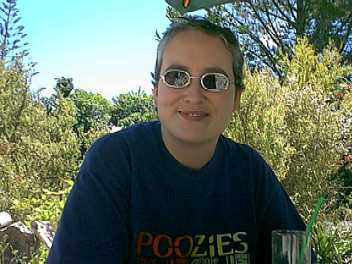Monday, November 14, 2011
The New Digital Shoreline: How Web2.0 and Millennials Are Revolutionizing Higher Education Roger McHaney
Review for Educational Developers Caucus
This book is written in a very direct,
conversational style that is easy to read and explains why we need to rethink
how we approach teaching and learning in the light of technology and learner change
and how we might do that. Roger’s basic premise is that the world has changed,
our learners have changed and we need to understand them better and harness the
technology to make the pedagogic changes we could only dream of previously. He
points out that we have argued for years that active learning is more important
that simple memorisation and information recall and that learning how to learn
and being able to evaluate information found for accuracy and applicability have
become more important in a world where information is readily available.
He uses personal stories to explain and
clarify his points and has developed a range of typologies that categorise
different types of users and learners, helping us to understand the millennial
mindset and our relationship to it, addressing possible culture clashes and
likely disappointments on both sides. He uses leading proponents of a new way
of teaching and learning and the use of digital media (e.g. Michael Wesch,
Stephen Downes and George Siemens to whom I might add Frank Renni & Robin
Mason and Martin Weller) to link to educational theories and explain how we
might use the technology.
Chapter 1 sets the scene, chapter 2
explains the behaviour and skills of our millenials and how we might manage our
interactions with them, chapter 3 looks at learning platforms, tools and
devices we are all familiar with such as virtual learning environments,
clickers and e-books, netbooks and webcams. Chapters 4 and 5 deal with the
opportunities created by the Web2.0 world and provide a useful overview for
those new to these technologies. Chapter 6 deals with why we should embrace
this world and introduces a four stage model of adjustment for us. Chapter 7
links learning theory to technology and reminds us that a variety of approaches
and technology is the way to go: appropriate use. In Chapter 8 he rounds it all
off by summarising the skills he’d like his students to have and which could be
acquired through the judicious use of Web2.0 technology, they include the
ability to search for, interpret and evaluate relevant facts and information,
to make sound judgements, to be able to use social media and communications
tools appropriately and effectively and to make use of and acknowledge others’
expertise.
This is an excellent book for those of you
who have just arrived at the shoreline and are peering out at the horizon with
trepidation. It should be given to
colleagues who need to be persuaded to join those of you paddling out there and
can be used when considering curriculum review or assessment alternatives. It has given me lots of ideas which I’m going
to use with academic colleagues on our institution’s PostGrad Certificate in
Academic Practice: watch this space!
Mason, R., & Rennie, F. (2004). The
Connecticon: learning for the connected generation. Greenwich, Connecticut,
U.S.A.: Information Age Publishing Inc.
Mason, R., &
Rennie, F. (2008). E-Learning and Social Networking Handbook: Resources for
Higher Education. London: Routledge.
Siemens, G. (2004,
December 12, 2004). Connectivism: A Learning Theory for the Digital Age, from
http://www.elearnspace.org/Articles/connectivism.htm
Weller, M. (2011). The
Digital Scholar. London, England: 'Bloomsbury Academic'.
Wesch, M. (2007). Web2.0 ... The Machine is us/ing us. Retrieved 27th October, 2011, 2011, from
Wesch, M. (2008).
Revisiting “a vision of students today” Retrieved 27th October 2011,
from

